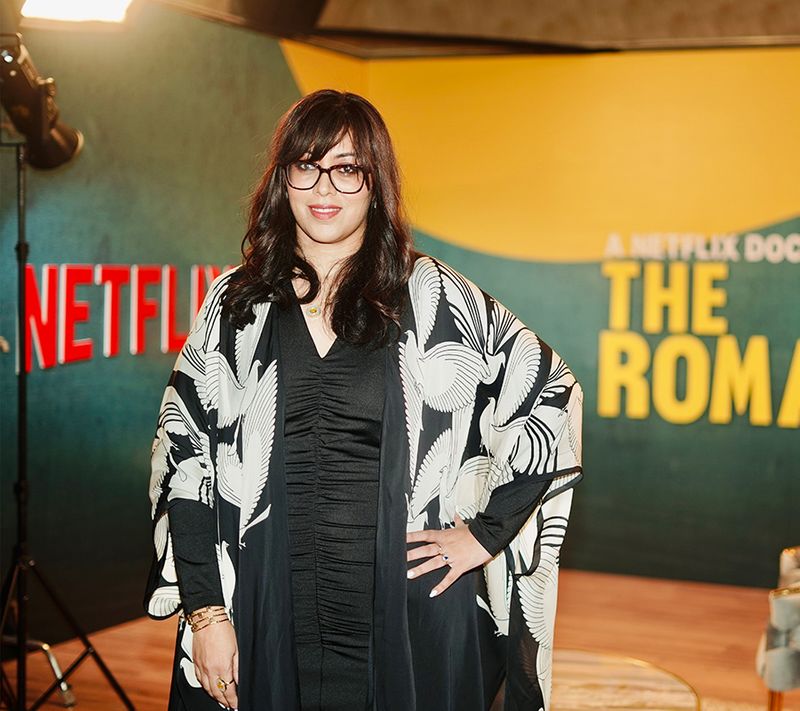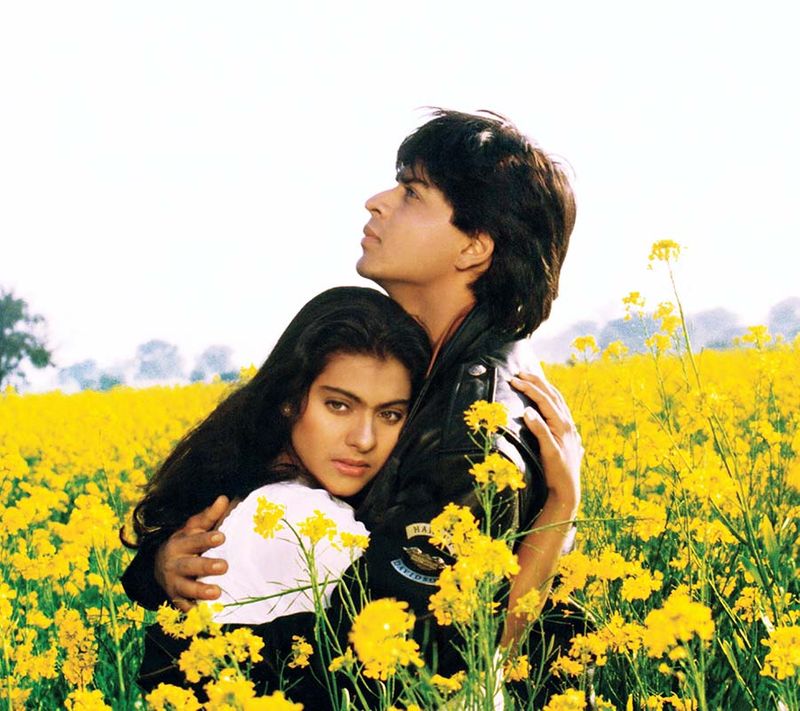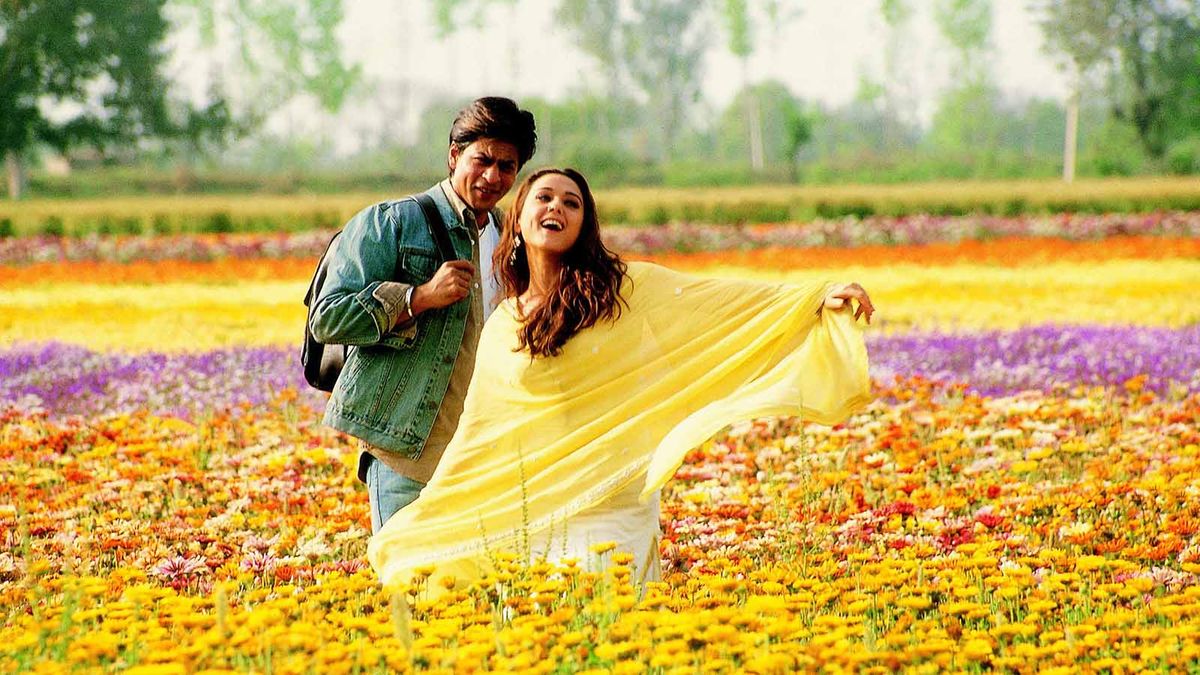Snapshots
At a screening of Netflix’s recently-released docu-series The Romantics, the audience cheered and exulted each time a scene or song from films such as Kabhi Kabhie, Silsila, Chandni, Dilwale Dulhania Le Jayenge, Dil To Pagal Hai and Veer Zaara among others played out. The four-part series, directed by Smriti Mundhra, aims to capture filmmaker Yash Chopra and the legacy he has left behind of aesthetically pleasing and complexity-driven love stories. Nobody captured the trials and tribulations of love the way the late filmmaker did. And even though he was a versatile filmmaker who made some pretty successful crime, action and thriller films, it is his treatment of romance and almost poetic approach to filmmaking that earned him the title ‘King of Romance’.

How it all began for Yash Chopra
Starting as an assistant to his elder brother BR Chopra, a prominent director of his time, Yash went on to debut as a director in 1959 with Dhool Ka Phool, a sensitive and message-oriented film. In the films that he made during his initial years, film critic Tanul Thacker points out in the series, Yash did not differentiate between the Punjab of India and the Punjab of Pakistan which is evident in his approach. However, even in those films, Thacker says that Yash had “a predisposition to the softness of emotions”. His 1965 blockbuster Waqt was a testimony to the grandness and opulence that was going to become the hallmark of his cinema in the years to come.
That is not to say that Yash did not make hard-hitting dramas. Ittefaq, made in 1969, was a mystery thriller; while in 1978, he made the intense family drama Trishul. The blockbuster success of films such as Deewaar (1975) and Kaala Patthar (1979) proved that Yash could tackle genres such as crime and action with equal ease and proficiency.
However, it is his romantic films that generations of filmgoers have come to associate with the legendary filmmaker. Take his name and images of good-looking couples with the heroine almost always clad in beautiful chiffon saris frolicking among snow-clad mountains or tulip fields immediately springs to mind. Says Mundhra, “He does have an incredible range as a filmmaker but it is the romance that he is known for. His love stories have fascinated Hindi film audiences for generations. That is also what came up during my research and conversations with people who knew him, that romance was really close to his heart.”
Marriage to Pam and his take on romance
The beautiful and charming Pamela Singh became Yash Chopra's life partner in 1970 and it seems that the love and warmth the marriage brought into his personal life also seeped into his professional life. Although he had made a romantic drama Daag in 1973, in 1976, he directed his first full-blown romantic film Kabhi Kabhie, following it up with love stories such as Silsila (1981), Chandni (1989), Lamhe (1991), Darr (1993), Dil To Pagal Hai (1997), Veer Zaara (2004) and Jab Tak Hai Jaan (2012). As a producer, he backed romances such as Aaina (1993), Yeh Dillagi (1994), his son Aditya Chopra’s directorial debut Dilwale Dulhania Le Jayenge (1995), Mohabbatein (2000) and Saathiya (2002) among others.

Mundhra believes his wife, fondly known as Pam by everyone, was a major influence on Yash’s approach to films. “She is an incredibly intelligent and well-read woman and I think he was also a man who really respected women and looked at them as peers and intellectual equals,” she says. A singer herself, Pam also had a say in the music of his films. “They made a great partnership,” adds Mundhra.
Leading ladies of Yash Raj Films and their empowered portrayals
The quintessential image of a Yash Chopra heroine is one draped in pretty chiffon saris and being serenaded in the snowy valleys of Switzerland. But Yash’s heroines were much more than that. Whether it is Waheeda Rehman’s character in Kabhi Kabhie who takes responsibility for her daughter born out of wedlock to Sridevi in Lamhe who falls in love with a much older man but sticks to her decision of loving him till the end, the leading ladies of Yash’s movies have always been layered and empowered.
Mundhra agrees, adding that the filmmaker gave his heroines a lot to work with. “Revisiting some of his older films for the purpose of the series, it really struck me how ahead of his times he was in his portrayal of not only his characters but relationships in general. Many of his films were driven by his female characters,” she says, adding that not only did he make his leading ladies look beautiful but also presented them with a lot of character and complexity to work with.
Relationships are not easy
Yash was riding high on the success of his 1973 film Daag starring superstar Rajesh Khanna when he decided to direct Amitabh Bachchan in the action crime film Deewaar, cementing Big B’s position as the ‘angry young man’. However, it was while shooting the 1975 film that Yash also started shooting for the romantic ensemble film Kabhi Kabhie, written by his wife Pamela Chopra. In the docu-series, Bachchan describes how it was such a drastic shift for him from the dark world of Deewaar to the snow-clad and poetically-charged atmosphere of Kabhi Kabhie, adding that the filmmaker was able to adapt to it with ease. “After every successful film, a director wants to try something new. I think Kabhi Kabhie in a way was an art film; an experiment in romance,” says Yash in the series.
In both Kabhi Kabhie and Silsila, released in 1981, Mundhra feels that the filmmaker was able to delve deep into the complexity of romantic relationships and ideas of love without burdening them with any judgement. “What is really amazing about him is that even when his characters — male or female — were flawed or made decisions that were not exactly the best, he didn’t judge them. He understood that life and love are complicated. He was interested in exploring that, which I think made him one of the most interesting filmmakers of his time,” says Mundhra.

Taking risks with unlikely love stories
In 1989, Yash took what he calls the “biggest gamble of his life”. Chandni was a story of a girl who falls in love with a man but is forced to choose between him and another at the end. It is a nuanced and mature story with no set formula. A prominent film critic of that time questioned Yash about making a film that has Vinod Khanna but no action scenes and “no highlights”. Sridevi, the leading lady of the film, was not exactly thrilled at the prospect of being clad mostly in white clothes throughout the film. But Yash wanted to direct a film that touched his heart. He had taken a loan from the bank for the film, and even though the initial reports of the film did not look promising, the movie went on to become a blockbuster with the music topping the charts.
Yash made a film that appealed to his sensibilities and the gamble paid off. However, it wasn’t the same with Lamhe (1991). The Anil Kapoor-Sridevi-starrer is today considered much ahead of its times, but the audience then did not take too kindly to the story of a young man besotted by a much older woman, only to later fall in love with her daughter.
AlsoRead2

In 1993’s Darr, starring Shah Rukh Khan, Juhi Chawla and Sunny Deol, Yash explored the violent side of love, with SRK’s character’s obsession with Kiran (Juhi) bringing out the worst in him. He returned to the complexities of love with the love triangle Dil To Pagal Hai (1997) with SRK, Madhuri Dixit and Karisma Kapoor in the lead. The musical romance with stunning choreography by Shiamak Dawar and beautiful costumes by Manish Malhotra is remembered for its nuanced performances by the lead trio and melodious soundtrack. In 2004, he directed Veer Zaara, considered one of the top romantic Hindi films of all time. Returning to the theme of partition and a sensitive portrayal of India-Pakistan relations, this SRK-Preity Zinta-Rani Mukerji starrer was his tribute to Punjab.
Returning to direction eight years after Veer Zaara, Yash made Jab Tak Hai Jaan in 2012. The plot revolves around Samar, a Major in the Indian Army who falls in love with Meera but she takes a vow to leave him if God saves him after being injured seriously in an accident. A story of sacrifice, the complexity of life and enduring ideas of love makes this film, what Mundhra calls “the classic Yash Chopra romance”. “Only he could have made that film like that,” she says. What made the film even more special was the fact that it proved to be the filmmaker’s last directorial as he passed away a month before its release. “The tragic part is that he never got to see the film in completion but Aditya finishing the film for him felt like a perfect encapsulation of their relationship, with the son taking forward his father’s legacy,” says Mundhra.



